Vegetable dishes hold a revered place in the culinary landscape of Indonesia, offering a tantalizing glimpse into the nation's diverse and vibrant cuisine. From the verdant fields of Java to the lush landscapes of Bali, Indonesian vegetable dishes showcase an array of fresh produce, aromatic spices, and time-honored cooking techniques. With influences ranging from traditional Javanese recipes to indigenous specialties of Sumatra, these dishes celebrate the abundance of nature while reflecting the cultural heritage of the archipelago. Join us on a journey through Indonesia's vegetable dishes, where flavors bloom and colors dance in harmony, inviting you to savor every delicious moment.
Rojak
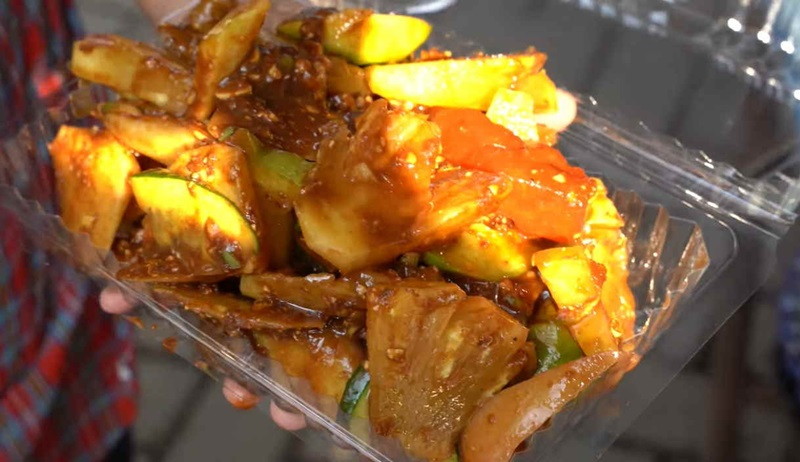
Rojak is a popular and delicious vegetable dish in Indonesia. It is a unique blend of various vegetables, fruits, and other ingredients that come together to create a delightful and flavorful mix. The word "rojak" itself means "mixture" in Indonesian, and this dish truly lives up to its name. The main ingredients of rojak include cucumber, pineapple, bean sprouts, and tofu, all of which are cut into bite-sized pieces. These vegetables are then tossed together with a tangy and spicy sauce made from a combination of palm sugar, tamarind, chili, and shrimp paste. The sauce adds a depth of flavor and balances the sweetness of the fruits and vegetables. Rojak is often garnished with crushed peanuts and crispy fried onions, which add a crunchy texture to the dish. Some variations of rojak also include ingredients like boiled eggs, fried tofu, and tempeh, a traditional Indonesian soy product.
Acar
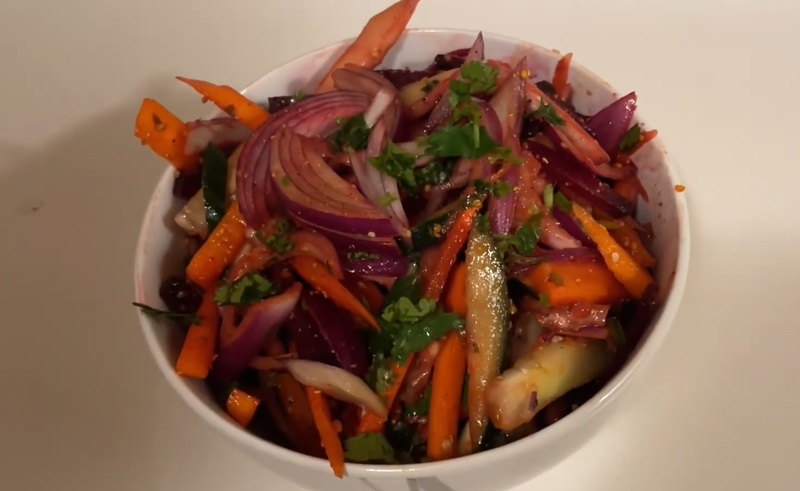
Acar is an Indonesian vegetable pickle, often prepared in large quantities for convenient storage in sealed jars. Comprising cucumber, carrots, cabbage, shallots, bird's eye chili, and yardlong beans, it undergoes pickling in vinegar with kaffir lime for citrus aroma and dried chilies. Some versions include ground peanuts, offering a unique twist. Typically served as a condiment, acar's sourness refreshes meals, particularly complementing fishy or rich, oily dishes like grilled fish or mutton satay by neutralizing the richness.
Pecel
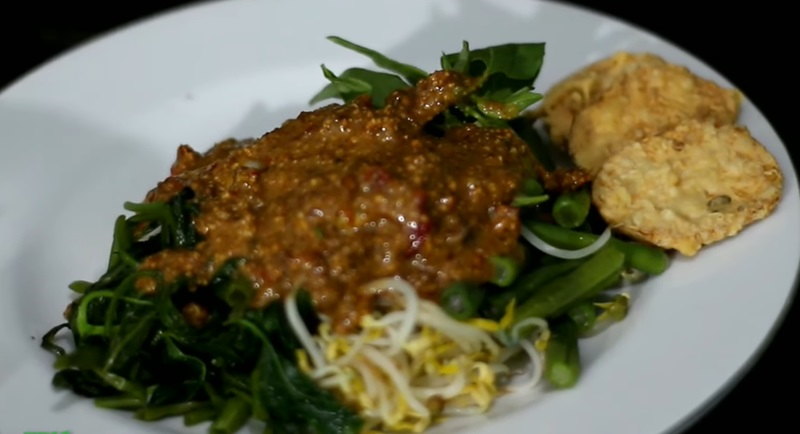
Pecel, a traditional Javanese salad, features a delectable peanut sauce complementing a variety of leafy vegetables, bean sprouts, long beans, and cabbage. Additional local vegetables like amaranth leaves or cassava leaves may be incorporated based on seasonal availability. The sauce, crafted from roasted or fried peanuts, asam jawa, coconut sugar, and spices, varies in thickness, sweetness, and spiciness according to regional preferences. Typically enjoyed with rice or rice cake (lontong or kupat), Pecel can also be savored independently or paired with fried side dishes.
Gudeg
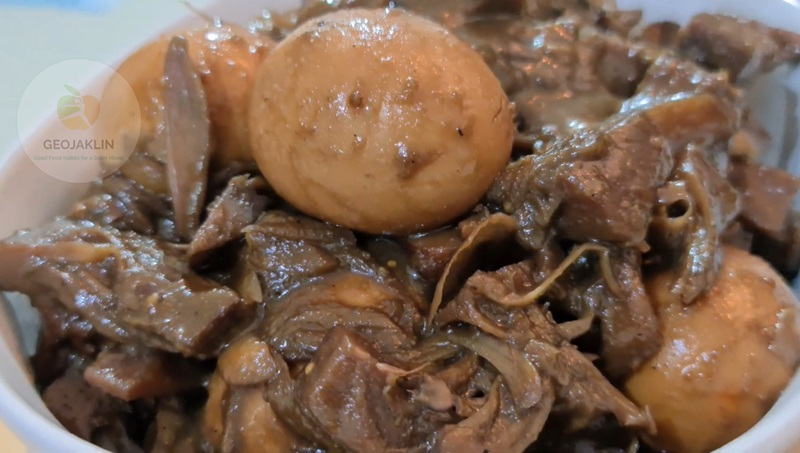
Gudeg is a traditional Indonesian dish that is popular in the Yogyakarta region of Java. It is a slow-cooked dish made primarily from young jackfruit, which is boiled until tender and then cooked with various herbs and spices. The dish is usually sweet and savory, with a hint of spiciness. To prepare Gudeg, the jackfruit is first boiled in coconut milk and palm sugar, which gives it its sweet flavor. It is then slow-cooked for hours, allowing the flavors to meld together. Other ingredients such as garlic, shallots, and various spices like coriander, galangal, and bay leaves are added to enhance the taste. Gudeg is typically served with steamed rice and accompanied by side dishes like tofu, tempeh, and chicken. The dish has a unique texture, with the jackfruit taking on a tender and slightly fibrous consistency.
Cap cai
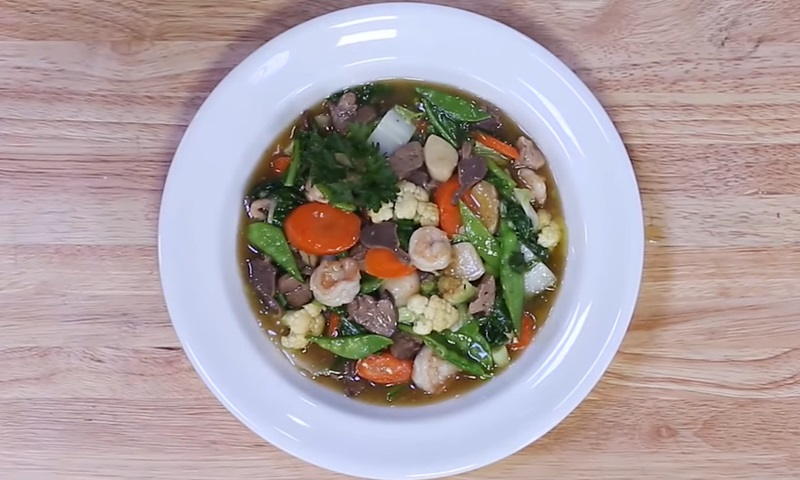
Cap Cai is a popular vegetable dish in Indonesia that is known for its vibrant flavors and healthy ingredients. This dish typically consists of a mix of various vegetables such as carrots, cabbage, mushrooms, bell peppers, and baby corn, stir-fried in a savory sauce. The vegetables in cap cai are often cooked until they are still crisp, retaining their natural crunchiness and vibrant colors. The sauce is usually made from a combination of soy sauce, oyster sauce, garlic, ginger, and sometimes a dash of chili for a hint of spiciness.
Ketoprak (dish)
-1704285497.jpg)
Ketoprak is a popular vegetable dish in Indonesia that is renowned for its unique combination of flavors and textures. This traditional Javanese dish is made with a medley of fresh vegetables, tofu, rice vermicelli noodles, and a rich peanut sauce. The vegetables used in Ketoprak can vary, but commonly include bean sprouts, cabbage, carrots, and cucumber. These vegetables provide a refreshing crunch and a burst of natural sweetness to the dish. The tofu is usually fried until golden brown, adding a delightful crispy element to the overall texture. The highlight of Ketoprak is undoubtedly the peanut sauce. Made from ground peanuts, garlic, shallots, tamarind paste, and palm sugar, the sauce is creamy, nutty, and slightly tangy. It is poured generously over the vegetables and noodles, giving the dish a distinct and sumptuous flavor.
Lawar (food)
-1704285724.jpg)
Lawar, an Indonesian dish originating from Bali, combines vegetables, coconut, and minced meat with an array of flavorful herbs and spices. The mixture includes green beans, beaten eggs, vegetable oil, kaffir lime leaves, coconut milk, palm sugar, fresh grated coconut, and fried shallots, all stir-fried in coconut oil. Lawar is named based on its protein components, such as chicken lawar or pork lawar, depending on the added meat. Variations may include jackfruit lawar, and some types incorporate butchered animal blood mixed with spices for added taste.
Karedok
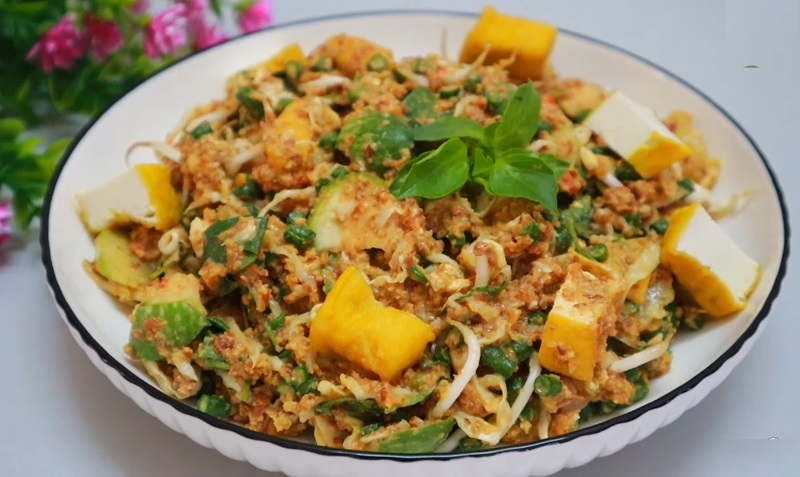
Karedok is a traditional vegetable dish from Indonesia, specifically from the Sundanese cuisine of West Java. It is a refreshing and healthy salad that features a variety of raw vegetables, making it a perfect choice for those seeking a light and nutritious meal. The star ingredients of Karedok are usually long beans, bean sprouts, cucumber, and cabbage. These vegetables are thinly sliced or julienned and then mixed together with a delicious peanut sauce. The sauce is made by grinding roasted peanuts with garlic, chili, palm sugar, and tamarind juice, creating a flavorful and slightly spicy dressing. Karedok is often garnished with fried shallots and served with a side of traditional shrimp crackers. It can be enjoyed as a standalone dish or as a side dish to accompany a main meal.
Sayur Lodeh
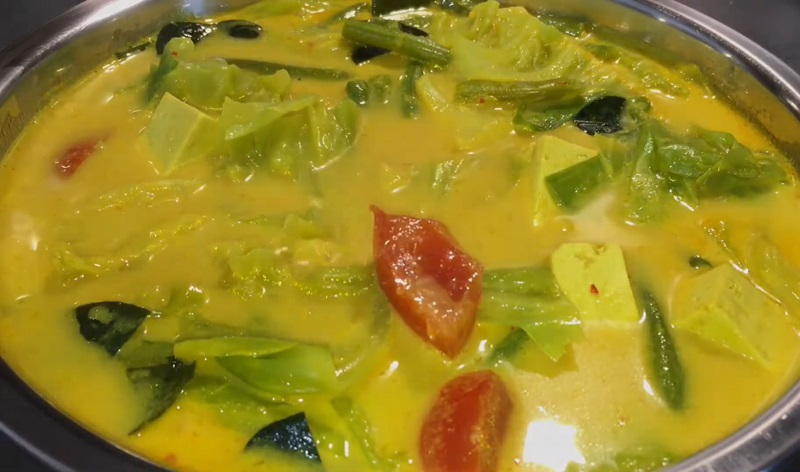
Sayur Lodeh stands out as a vibrant and flavorful vegetable dish in Indonesia. This delectable and nutritious creation involves a medley of vegetables simmered in a luscious coconut milk-based broth. Ingredients like long beans, cabbage, carrots, tofu, and tempeh are common, with variations based on personal preference. To prepare sayur lodeh, vegetables are lightly sautéed with aromatic spices like garlic, shallots, and turmeric. The addition of coconut milk forms a creamy base, while galangal, lemongrass, and kaffir lime leaves contribute distinctive flavors. Typically served as a main course with steamed rice or as a delightful side dish complementing other Indonesian cuisines.
Lalab
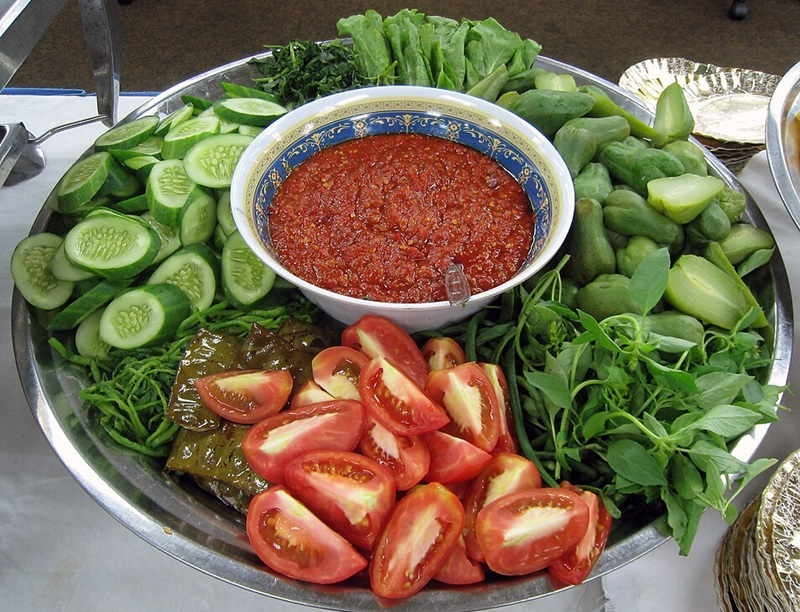
Lalab is a traditional Indonesian dish that features an array of fresh vegetables served with a spicy dipping sauce. This dish is commonly found in Sundanese cuisine, which originates from the West Java region of Indonesia. The vegetables used in lalab can vary, but typically include cucumber, cabbage, long beans, spinach, and lettuce. These vegetables are often served raw or blanched to retain their crispiness and natural flavors. The dipping sauce, known as sambal, is the highlight of the dish. It is made from a combination of chili peppers, shallots, garlic, lime juice, and shrimp paste, creating a spicy and tangy flavor profile. Lalab is often enjoyed as a refreshing side dish to accompany main meals, such as grilled fish or meat.
Ulam
-1705420141.jpg)
Ulam is a refreshing and nutritious dish that is commonly consumed as an appetizer or a side dish. Ulam is made with a variety of fresh and vibrant vegetables, herbs, and spices. The dish typically features a mix of raw or blanched vegetables such as cucumber, bean sprouts, carrots, and cabbage. These vegetables are thinly sliced or shredded to create a crunchy texture. Ulam is often garnished with aromatic herbs like basil, mint, and cilantro, which add a burst of flavor. To enhance the taste, a dressing is usually prepared using ingredients like lime juice, soy sauce, and chili peppers. This dressing adds a tangy and spicy kick to the dish.
Stir-Fried Water Spinach
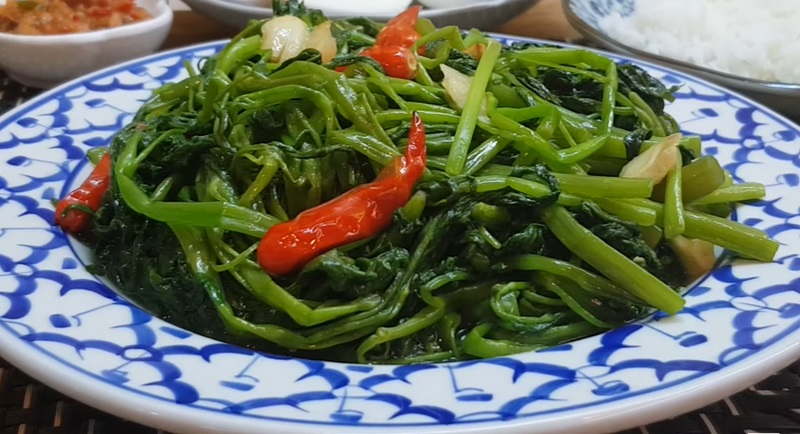
Stir-fried water spinach is a popular and delicious vegetable dish in Indonesia. This dish is made using fresh water spinach, also known as kangkung, which is widely available in the country. To prepare this dish, the water spinach is first cleaned and cut into bite-sized pieces. A mixture of garlic, shallots, and chili is then sautéed in a hot pan with a little oil until fragrant. The water spinach is then added to the pan and stir-fried for a few minutes until it becomes wilted and tender. Seasonings such as soy sauce, oyster sauce, and a pinch of sugar are added to enhance the flavor of the dish. Some variations may also include shrimp paste or shrimp paste sauce for an extra umami kick.
Asinan

Asinan, a popular dish in Indonesia, involves pickling vegetables or fruits through brining or vinegar. The term "Asin," meaning "salty" in Indonesian, refers to the preservation method using a salty water solution. Distinguishing it from the fresh rujak, Asinan is a preserved medley. Two popular variations are Asinan Betawi, featuring preserved Chinese cabbage, tofu, and more in a hot peanut sauce, and Asinan Bogor, a fruit version with preserved tropical fruits in sweet, hot, and sour vinegar-chili sauce.
Sayur Asem
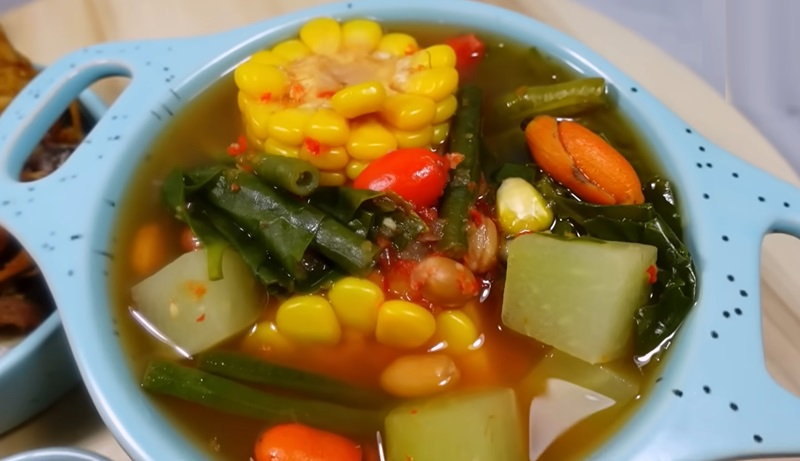
Sayur Asem is an Indonesian vegetable soup. Characterized by its sweet and sour flavor derived from tamarind soup, it pairs exceptionally well with fried or grilled dishes. The soup features a medley of ingredients such as peanuts, young jackfruit, melinjo leaves and seeds, bilimbi, chayote, long beans, and occasionally corn, all cooked in a tamarind-based broth enriched with beef stock for added depth of flavor.
Urap
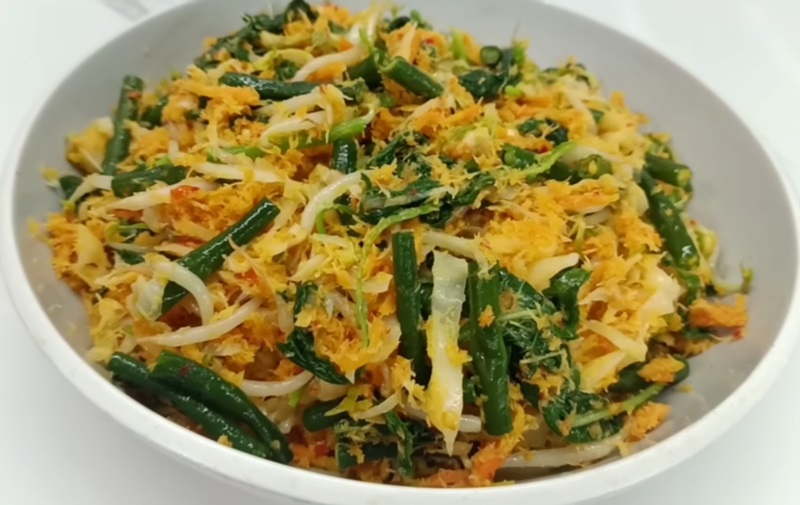
Urap, a delightful salad, features steamed vegetables combined with seasoned, spiced grated coconut dressing. It serves as a flavorful vegetarian dish or a complementary side. Common vegetables include spinach, water spinach, young cassava leaf, papaya leaf, Chinese long beans, bean sprouts, and cabbage. To enhance the taste, recipes often emphasize the use of freshly shredded old coconut or serundeng instead of leftovers. The shredded coconut is seasoned with ground shallot, garlic, red chili pepper, tamarind juice, galangal, salt, and coconut sugar.
Okra Soup
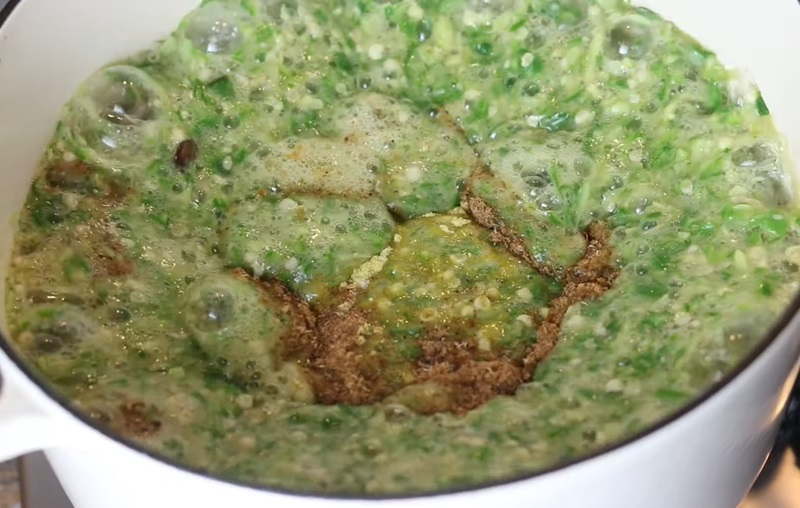
Okra Soup is a delicious and nutritious soup is made with fresh okra, also known as lady's fingers, along with other vegetables and spices. To prepare the dish, the okra is washed and cut into bite-sized pieces. Other vegetables such as carrots, green beans, and corn are also added to the soup to enhance the flavors and textures. The vegetables are then cooked in a flavorful broth made from garlic, shallots, and Indonesian spices such as turmeric and galangal. The result is a vibrant and fragrant soup that is not only visually appealing but also packed with vitamins and minerals.
Sayur Bayam

Sayur Bayam is a popular vegetable dish in Indonesia that features spinach as the main ingredient. This nutritious and flavorful dish is loved by Indonesians for its simplicity and delicious taste. To prepare sayur bayam, spinach leaves are first thoroughly washed and then blanched in boiling water to retain their vibrant green color. The blanched spinach is then drained and set aside. In a separate pan, a mixture of shallots, garlic, and chili is sautéed in oil until fragrant. This aromatic base is then combined with coconut milk, creating a creamy and rich broth. The blanched spinach is added to the broth and simmered until it is tender and fully infused with the flavors of the spices and coconut milk.
Plecing Kangkung
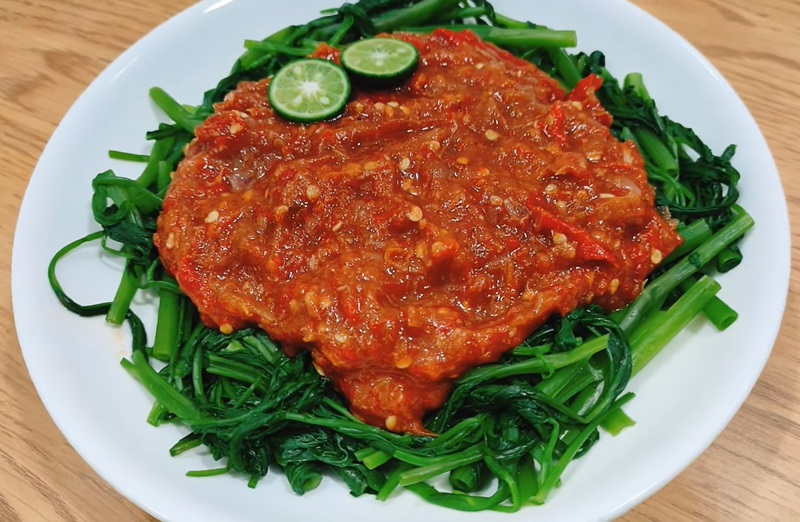
Plecing Kangkung is a popular vegetable dish from Indonesia that is made with kangkung, also known as water spinach, which is blanched and served with a spicy sambal sauce. To prepare Plecing kangkung, the kangkung leaves are typically blanched in boiling water for a short time until they become tender, yet retain their vibrant green color. The blanched kangkung is then drained and served on a plate. The highlight of this dish is the spicy sambal sauce that accompanies the kangkung. The sambal sauce is typically made by grinding together red chili peppers, shallots, garlic, shrimp paste, and lime juice. The resulting sauce is spicy, tangy, and packed with flavor.
Sayur Sop
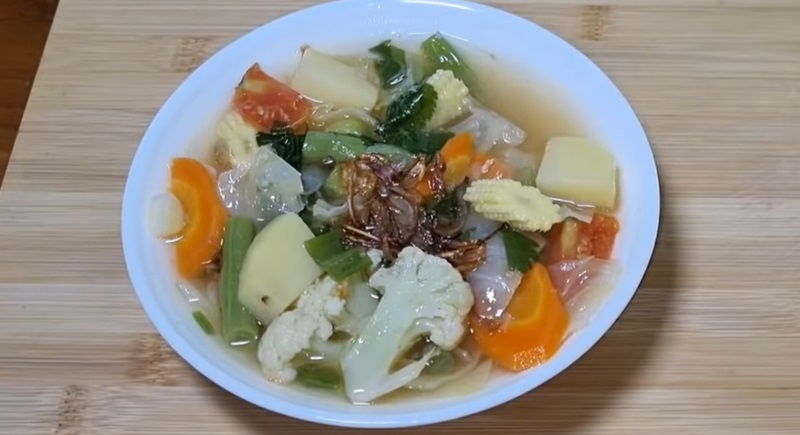
Sayur Sop, a comforting soup, embraces a variety of vegetables complemented by meat or chicken. "Sayur" signifies vegetables, while "sop" denotes soup. The base is a clear broth from chicken or meat bones infused with garlic, shallots, and ginger. Vegetables like carrots, cabbage, green beans, potatoes, and corn are commonly used. Some versions incorporate proteins like chicken, beef, or shrimp, cooked separately and added towards the end. Additional elements such as tofu, mushrooms, and vermicelli noodles can also be added to enhance this flavorful dish.
Buntil
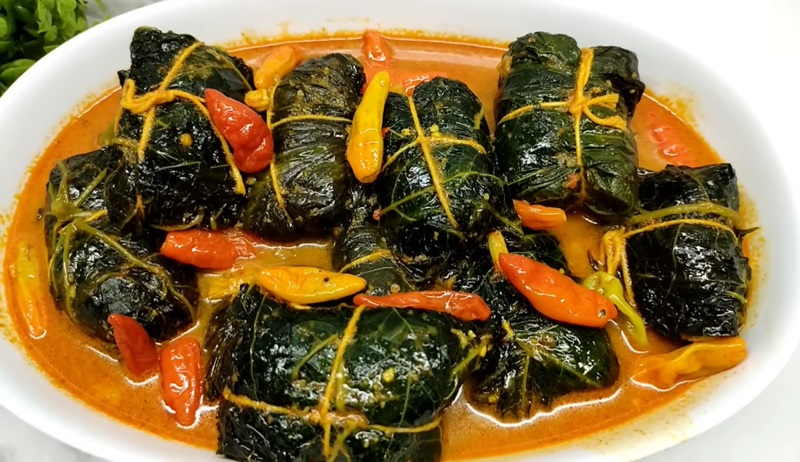
Buntil, a popular side dish in Central Java, Indonesia, features cassava leaves immersed in rich coconut milk, creating a simple yet delicious culinary delight. This dish, appreciated for its simplicity, is also crafted using taro leaves and papaya leaves. With a savory and spicy flavor, coupled with the crunchiness of cassava leaves, Buntil pairs perfectly with warm rice for a satisfying meal.






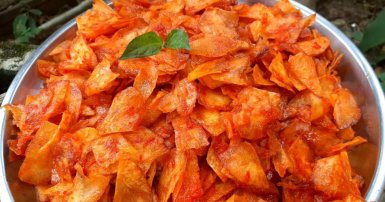
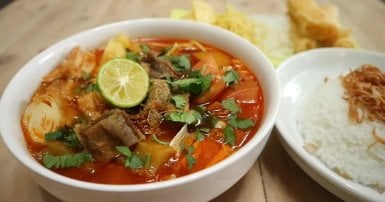


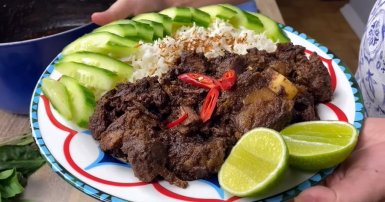
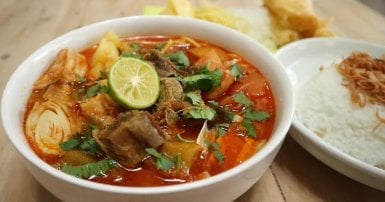

-1709813013.jpg)


